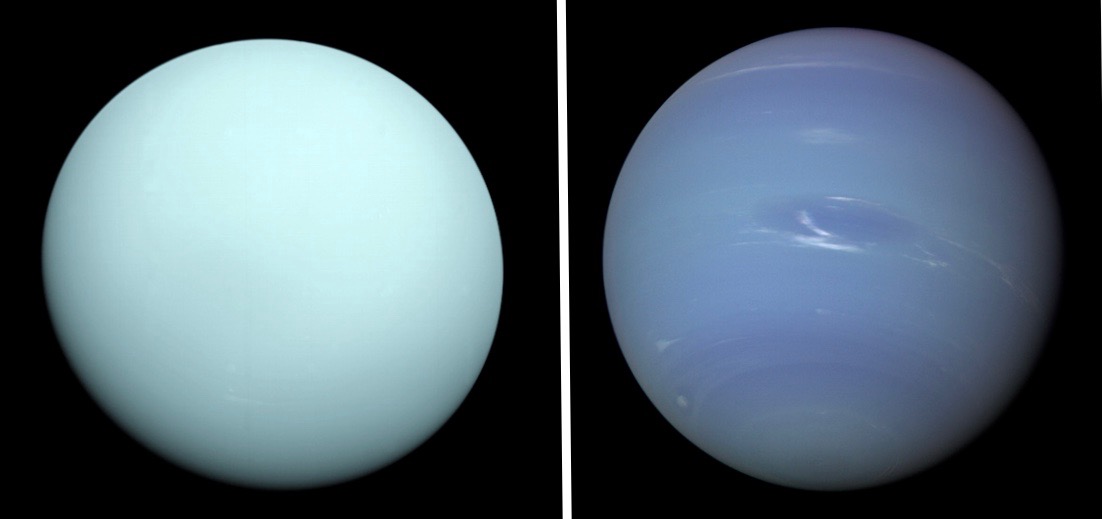
In our solar system, the two outermost planets of Uranus and Neptune are something of an oddity. Although both planets are of a similar mass and are similarly distant from the sun, the two are markedly different in terms of the way that they orbit and how their moons and satellites move around them. A new paper proposes a theory for why this is: Because of two different massive impact events during their formation.
Despite the planets’ apparent similarity, “there are also striking differences between the two planets that require explanation,” Christian Reinhardt, lead author of the paper, said in a statement.
The first major difference between the two planets is their tilt. Like Earth, most planets in our solar system are slightly titled on their axes so one part of the planet is closer to the sun at different times of year, which is why we have seasons. Both Uranus and Neptune have extremely long seasons, lasting up to a decade.
But the notable difference is that Uranus is titled to an extreme degree, to such an extent that it is almost completely on its side. “Uranus and its major satellites are tilted about 97 degrees into the Solar plane and the planet effectively rotates retrograde with respect to the sun,” co-author Joachim Stadel said in the statement.
Another difference is the satellites of the planets. Both Uranus and its moons are titled at the same angle, which suggests they formed from a disk, like Earth’s moon. But on Neptune, its largest moon Triton orbits at an angle relative to the planet, suggesting that the moon was formed elsewhere and was pulled in by Neptune’s gravity.
The paper proposes that the differences can be explained by the way the planets formed. Both began in similar circumstances, but were differently affected by impacts.
The researchers ran computer simulations and found that the most likely cause of Uranus’ tilt is that it was grazed by a large object which pushed the planet over onto its side but did not affect its interior. In the case of Neptune, the planet seems to have been subject to a head-on collision which did affect its interior, leading to heat moving from the interior to the surface much more quickly than on other planets.
“We clearly show that an initially similar formation pathway to Uranus and Neptune can result in the dichotomy observed in the properties of these fascinating outer planets,” co-author Ravit Helled summarized.
The findings are published in the journal Monthly Notices of the Royal Astronomical Society.



